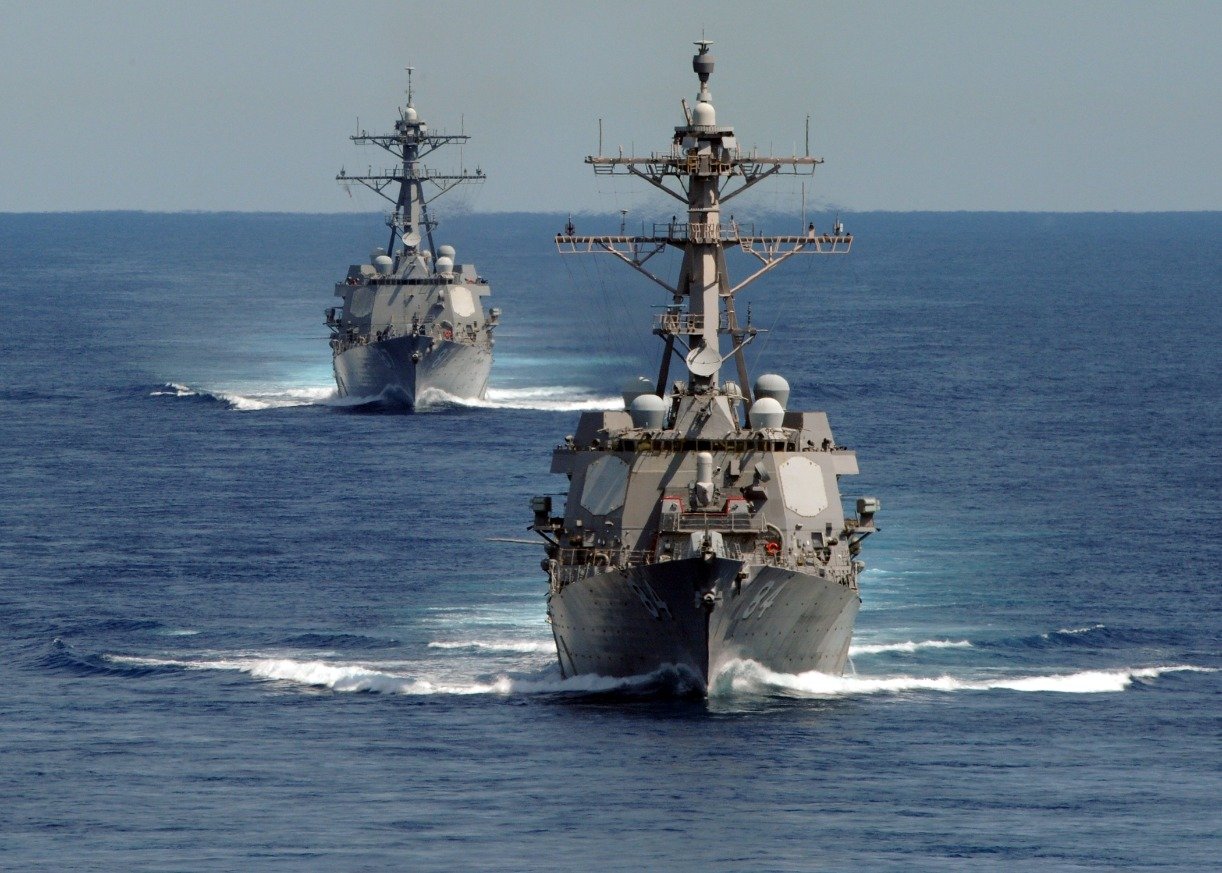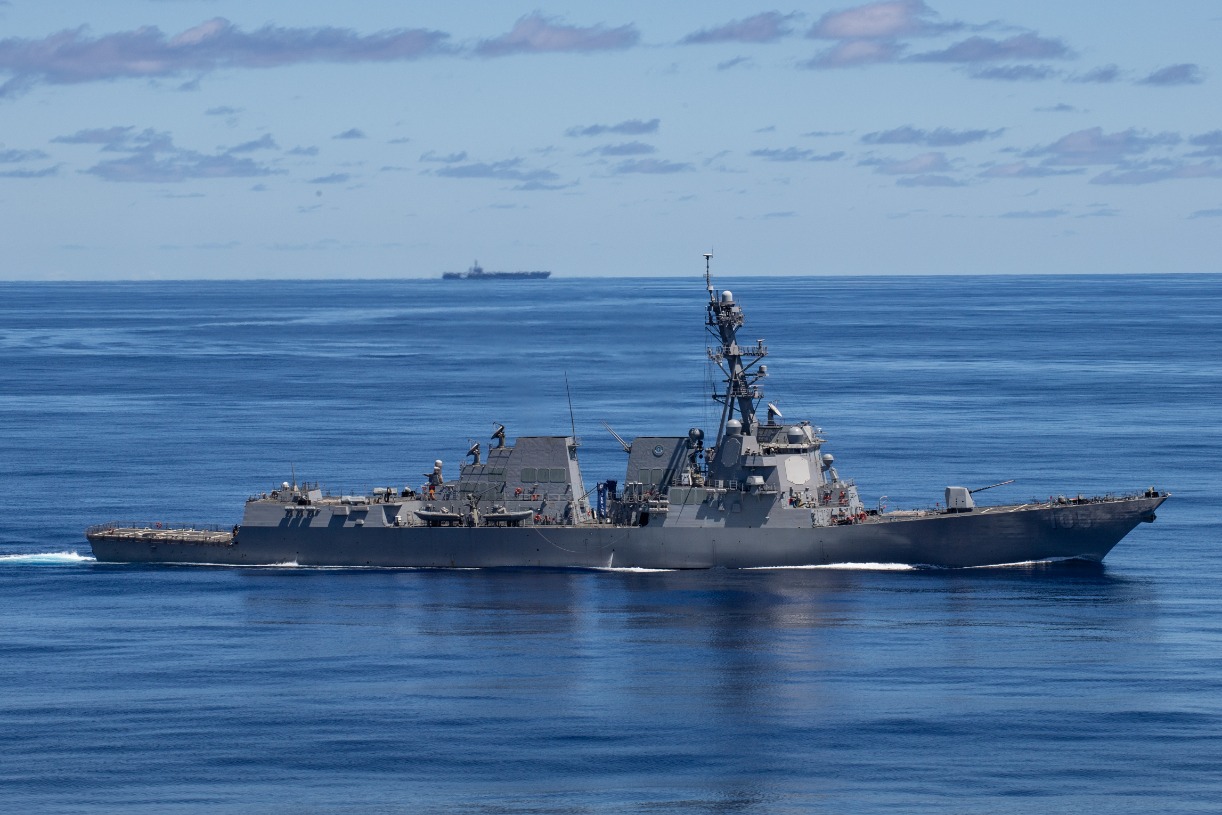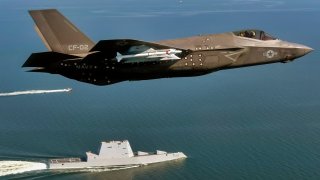TRAM: The U.S. Navy Wants to Rearm Warships at Sea
The U.S. Navy's new Transferrable Rearming Mechanism (TRAM) allows surface warships to reload missile canisters at sea, potentially extending combat operations without returning to port. This innovation aims to address logistical challenges in conflicts, particularly against China.
Summary and Key Points: The U.S. Navy's new Transferrable Rearming Mechanism (TRAM) allows surface warships to reload missile canisters at sea, potentially extending combat operations without returning to port. This innovation aims to address logistical challenges in conflicts, particularly against China.

-However, China's anti-access/area-denial (A2/AD) capabilities pose significant threats that the Navy has yet to effectively counter. While TRAM enhances operational endurance, its effectiveness is limited if U.S. ships can't penetrate China's A2/AD defenses.
-Overcoming these advanced defensive systems remains crucial for TRAM's utility in future naval engagements. Until then, the Navy's new capability may be premature against a well-prepared adversary like China.
The U.S. Navy Misses the Boat with Its TRAM Capability
It takes many things to win modern wars. But the baseline requirement is a proper logistical supply chain linking your forces with their base of support. In the U.S. case, that means linking a forward-deployed military, in particular the Navy, with its homeland. America is blessed to be free of threats in its near-abroad. Instead, the U.S. moves its all-volunteer force to Eurasia and the rimland surrounding it.
The Navy is therefore essential to America’s military dominance.
For the first time since the Second World War, though, American rivals are rising to challenge the Navy’s freedom of movement.
The Navy’s primary role is what’s known as “sea control.” Essentially, it is the Navy’s job to ensure the Americans can access any waterway in the world quickly in order to win whatever conflict the U.S. is fighting. But the Navy’s ability to do this has shrunk as the capabilities of rival nation-states like China increase relative to America’s.

China’s threat is far away from the United States. The Pacific is a vast ocean separating the power base of the U.S. military from the possible battlefields of any conflict with the People’s Republic of China. Given the geography and disposition of the U.S. military, the Navy will play a leading role in any fight with China. That is why China has worked assiduously to undermine the ability of the U.S. Navy to reliably project power into contested regions in the Indo-Pacific.
TRAM: Understanding the Role of Logistics
One likely area of attack from China would be against American logistics supporting any naval activity in the Indo-Pacific during a possible war with Beijing. Finally, the Navy appears to be on the brink of overcoming a deficit in this regard. A recent successful demonstration from the Naval Surface Warfare Center at Port Hueneme in California showed how the U.S. Navy’s surface fleet intends to keep besieged units in combat for longer.
The folks at Port Hueneme proved they can reliably reload missile canisters into the Mk41 Vertical Launching Systems of U.S. Navy surface warships that are forward-deployed.
Known as the Transferrable Rearming Mechanism (TRAM), it is believed that this new capability of reloading at sea will be decisive for the Navy’s surface fleet in any engagement with a hostile navy.
Or, as the Navy’s official site exudes, “No longer will our combatants need to withdraw from combat for extended periods to return for vulnerable in-port reloading of weapon systems.”
It’s an unqualified good that the Navy can now do this. But it might come too late.
China has developed substantial countermeasures designed to overcome America’s perceived military advantages at sea. Its anti-access/area-denial (A2/AD) capabilities are now the foundation of China’s military presence in the South and East China Seas. These defensive systems are built to deny U.S. access to a contested battle area. Advanced sensors, anti-ship ballistic missile systems, and hypersonic weapons define China’s A2/AD threat.
Contrary to whatever the Navy’s official position on these A2/AD capabilities from China may be, the U.S. Navy does not have viable defenses against these systems.
The Navy is Not Keeping Up
More than that, the Navy has not yet effectively demonstrated that it has the ability to produce directed-energy weapons or hypersonic weapons of its own that can reliably challenge China. This creates a severe strategic deficit and lends China significant tactical advantages that it otherwise would lack.
America’s problem is the A2/AD threat. Being able to “fire two broadsides to the enemy’s one,” as Hunter Stires, a maritime analyst for the Office of the Secretary of Defense, described this new TRAM capability, misses the point. There’s no reason to reload at sea with TRAM if the surface fleet cannot get close enough to fire on Chinese targets that are protected by A2/AD defensive bubbles, nor is there any reason to reload at sea if China can simply sink U.S. warships with their A2/AD systems.
A Parade of Horribles
Will this capability be useful for the Navy?
Undoubtedly, yes.
Will it be useful before rival A2/AD systems can be overcome? Absolutely not.
Are rival A2/AD systems being overcome by Navy innovations? Not yet.

Once the A2/AD threat is mitigated, then the Navy surface fleet can be more fully used, and that reload-at-sea capability becomes more important. Until then, however, the Navy is basically putting the cart before the horse. This will have profoundly negative consequences for the U.S. military if a war with China erupts.
Author Experience and Expertise: Brandon J. Weichert
Brandon J. Weichert, a National Interest national security analyst, is a former Congressional staffer and geopolitical analyst who is a contributor at The Washington Times, the Asia Times, and The-Pipeline. He is the author of Winning Space: How America Remains a Superpower, Biohacked: China’s Race to Control Life, and The Shadow War: Iran’s Quest for Supremacy. His next book, A Disaster of Our Own Making: How the West Lost Ukraine, is due October 22 from Encounter Books. Weichert can be followed via Twitter @WeTheBrandon.
All images are Creative Commons or Shutterstock.
From the Vault
Russia Freaked Out: Why the U.S. Navy 'Unretired' the Iowa-Class Battleships
Battleship vs. Battlecruiser: Iowa-Class vs. Russia's Kirov-Class (Who Wins?)


